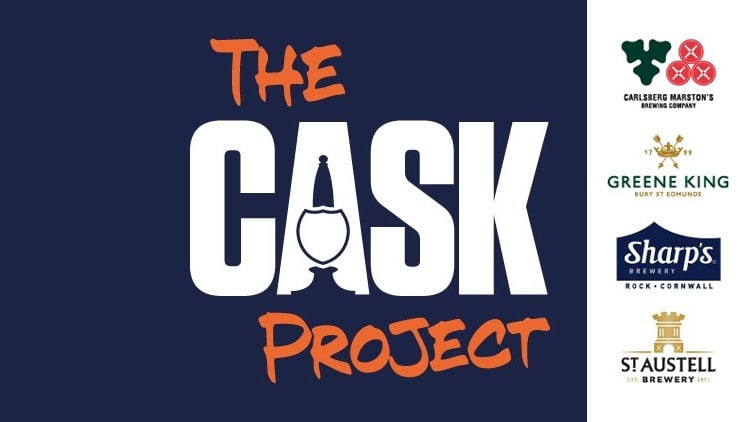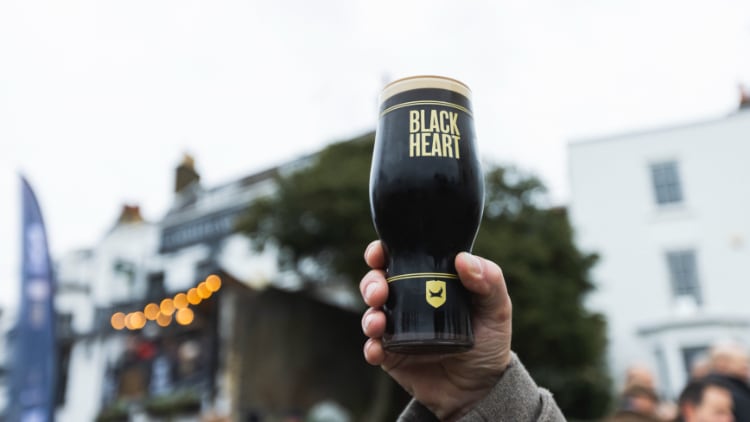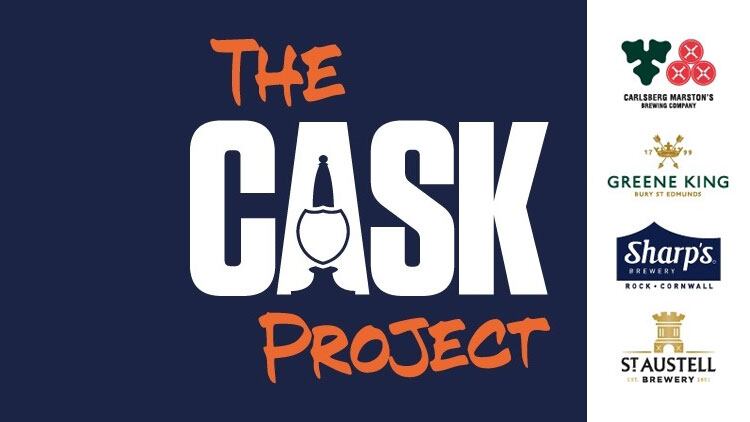Northern Monk was founded in 2013 by Russell Bisset and Brian Dickson who met at a beer festival and now sell mainly kegged beers to the on-trade but enjoy a roaring trade through its canned business with fans throughout the country – and through its ‘refectories’ in Leeds and Manchester.
Its most recognised brews include Faith Hazy Pale Ale (5.4% ABV), Eternal Session IPA (4.1% ABV) and New World IPA (6.2% ABV) but it has also been involved in plenty of collaborations with the latest being with Chris (Simpsons Artist), which is described as a juicy 6.5% tropical IPA.
Co-founder and technical director Dickson says: “There’s definitely been a demand for the craft brewers doing their takes on traditional styles. We get requests from all over the place.
“Last year, [on cask] we did 1 x 50-hectolitre (HL) brew per month of A Little Faith, the hazy session pale ale and about the same for Eternal. We’re doing up to about 100HL a month and, once a month, we just do a one-off special, it could be a hazy one or a more traditional beer or something completely different. It will be something that suits the dispense method and for customers who are looking for something craft, if you like, but in cask form – they want an interesting selection of cask beers.
“So that’s three brews a month but that’s less than 5% our output.
“The amount of cask we’ve produced has never really changed too much, it’s just everything else has grown around it. The story’s still much the same in that we’re trying to sell it at the right price point for cask and it needs to be a certain price in the bar so it turns over – it’s a debate that will never go away.”
The pricing issue
Bisset agrees on the price point issue when it comes to cask. “It’s a shame the consumer expectation is that cask is going to be relatively cheap. That doesn’t allow new people to come into the category and also forces down prices but, equally, it’s quite a nuanced thing because when times are tough, you don’t want to price people out, you want it to be quite an accessible product.
“Ideally, it would be higher and would allow more people to play in that sector but it’s just not a reality and it would be a massive shame to price people out of cask beer.”
He adds Timothy Taylor’s is a brewery he has a lot of respect for and its approach to cask by keeping its “super-premium pricing”.
“They’re focused on quality and are a big inspiration for us,” Bisset explains. “Me and Brian have spent quite a bit of time with their quality teams and looking at the seemingly infinite amount of quality control points they have there and we’ve tried to replicate that to a degree, albeit with different production processes.
“Their commitment to not discount particularly and to maintain that premium price point has allowed them to produce fantastic quality beer time after time.
“It would be good to see a little bit more kind of variation and acceptance of higher price point cask beers but I totally recognise that, as a drinker and from a societal point of view, you want it to feel accessible.

Dickson adds there are breweries that aren’t too worried about pushing the price point if making cask beer that is good quality because the right bars will take it and look after it, and says that market does exist.
Some of Northern Monk’s beers have lent themselves well to cask over the years, Bisset says. But admits cask has not been its focus but that’s not down to a lack of love for it.
He recalls the first cask beer he had was a Deuchars IPA and believes it cost as little as £1.29 in a JD Wetherspoon and although it was “crazy cheap”, he says it was a great entry into what cask could offer.
On the day of this interview (which was a Friday), Bisset says: “We’re actually out in, kind of, old school Bradford boozers this afternoon on a bit of a cask beer crawl, just taking in the region’s finest cask but we’ve never really focused on absolutely nailing it in cask even though some of ours have worked really well.”
He cites Eternal on cask as being “absolutely superb”. “There are some breweries, certainly the likes of Timothy Taylor’s, are absolutely 100% focused and absolutely smashing the cask beer category – and we’ve got infinite respect for that process. But you can’t do everything, you’ve got to focus on certain bits.”
Seeking cellarmanship
An ever-lasting issue for cask is how licensees store it and how doing so wrongly can detrimentally affect the wonderful brew. “The reality is the beauty of cask is part of the appeal and it takes a bit more work and a bit more love than keg products and maybe it would be better if there was a bit more cellar care out there but there’s a lot of pubs that do it really, really well,” Bisset says.
Dickson adds: “Naively, I like to hope that those are the ones that are doing well, the ones that know what they’re doing with it, look after it properly and turn it over.
“I’d much rather there were less handpulls on the bar but, of those that are there, [I hope they] a) have got beers on them and b) they are good quality and are turning over. I have a natural distrust of walking into pub that’s got 20 to 30 handpulls because you don’t know when the beers were put on and how quickly they’ve been getting through them. And if it’s not three or four deep at the bar, I’m dubious and less likely to try something new.”
He also laments that, from the brewer’s point of view, bad reviews affect their business but it would have left the brewery in a perfectly good state but a licensee has kept a beer on for a week or so and therefore the brewery is going to get a bad rap.
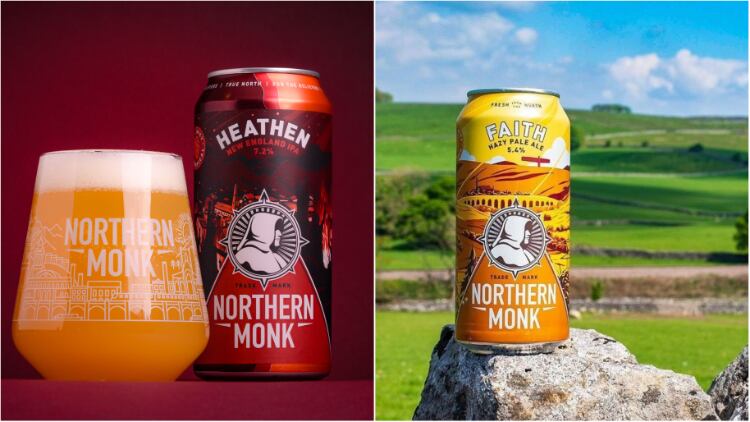
Bisset summarises: “Part of the beauty of cask is there are so many variables involved. And, as Brian says, so much of it is out of the brewer’s hands, so it’s like buying pork scratchings, sometimes they’re absolutely superb. And when it’s superb, it’s magic. So, yeah, there’s a little bit more pot luck involved.”
Dickson interjects: “We chat about this in the office. Ironically, with pork scratchings the more cheap and rubbish the packaging is, the better they’re going to be and I’m not sure that’s entirely true of beer.”
What’s in a name?
Recently, south-west craft brewer Verdant launched four cask beers to the on-trade and while craft beers have become famed for their longer, often cryptic names so should cask beers mimic the successful market for this or is the heritage of cask too important to be ignored?
Dickson offers his thoughts on the matter: “We’ve intentionally harked back to traditional branding. A lot of that is just the nature of cask beer. The pump clip is such a big thing with cask beer – a shorter word means you can use a larger font on the clip.
“As a customer, if you’ve got six or seven handpulls in front of you, you’ll get drawn to the one that catches your attention and that’s bright colours, a clear and obvious name, style and ABV, all the information you need is right there.
“Most cask ale drinkers are like ‘right I want a pale ale at 4%’ and that’s delivered a lot easier than a cask beer with a long name. With a craft beer can, it’s something a customer can pick it up and explore. The hands-on nature of small pack lends itself to that, which I don’t think cask beer does.
“If you’re at the bar and it’s busy, you don’t have time to read an essay on the pump clip, you just need to pick something. Brewers have to consider heritage for their designs and their locality when naming cask options.”
Bisset says there will always be space for the really playful side of craft beer to use funny names and to take things to extremes but there’s also an appreciation for a kind of simplicity for some of the traditional styles and some brewers are doing just that but in contemporary ways.
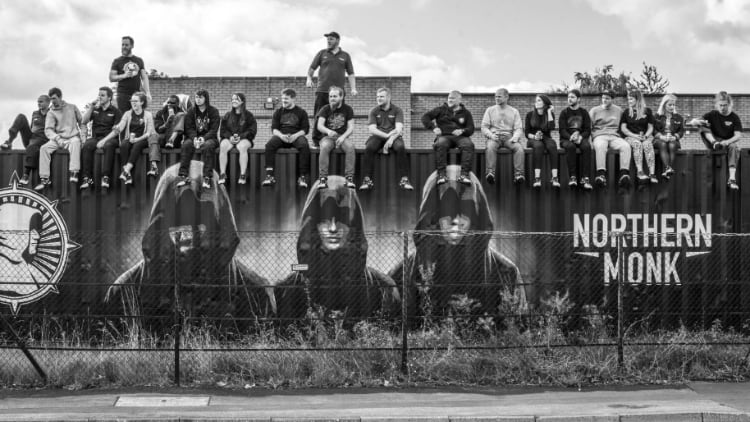
“We did Great Northern Lager about three years ago and did Great Northern Ale and that definitely plays into that contemporary interpretation,” he explains. “Another brewery that has done that really well is Newbarns – they’ve been doing that for a few years now where they’ve taken that contemporary approach to classic styles, both in terms of the design and the liquid.”
Younger market
Another hurdle cask beer has to overcome is the perception it is only enjoyed by middle-aged men. Dickson sees light at the end of this particular tunnel. “I think it is improving a little bit,” he says. “Yes, the association with the old man in sandals definitely still exists but I think CAMRA has done quite a lot of work to try to change that image.
“I was reading the most popular draught beer with students right now is Guinness. It’s kind of pleasing to hear the younger generation is coming through and drinking it, so if you drink Guinness, surely you’re more likely to try a cask beer than if you are a Carling drinker?”
Bisset says: “There are contemporary breweries, progressive breweries, doing fantastic cask beer as well [as craft] so I don’t see anything more could be done necessarily to bring people into the category – maybe it’s because I’m almost 40 now so I’m just entering the ‘peak cask beer era’ anyway so I don’t see so much of a gulf there.”
Talking of Guinness, rivals have entered the stout market such as BrewDog’s Black Heart and Anspach & Hobday’s London Black, Bisset says of the category: “Me and Brian did an afternoon in Belfast, tracking down every Irish stout we could so I’m on a bit of a one-man quest, which was genuinely driven by appreciation and I’m here for ‘stout wars’ if it means there’s more stouts available and they get even better. Bring on the wars. I’d love to do Great Northern Stout so ‘watch this space’ because I’m making a case for it.”
Doing things right
As Northern Monk continues to offer great beer to both the on and off-trades, how has its success been achieved?
Bisset says: “If I try to pick three things, I would say one was we had a genuine belief that we could make some of the best beer experiences in the world and while, many of them are certainly not the best in the world, we always had that as our kind of North Star.
“We do some stupid stuff – don’t get me wrong – and we’re quite happy to put our hands up and celebrate that. There should be fun, but we’re also very, very disciplined around quality and particularly for beers like Faith and anything in the Patrons series or the Northern Wild series, we are really meticulous on quality.
“We have always been recognised for our fridge fillers, or as we like to call them ‘fridge killers’ that are a core range or a classic range of beers, whatever it might be, we’ve always had a focus on go-to beers and try to really nail those.
“And doing stuff that pushes the boundaries of what beer can be, whether it’s pairing with street artists or illustrators like Chris (Simpsons Artist) with world-class liquid. And we’ve had some luck. Luck always helps but we’ve definitely done things at the right time and have been the right place sometimes too. And of course, we’ve got Brian who puts together a good beer recipe.”
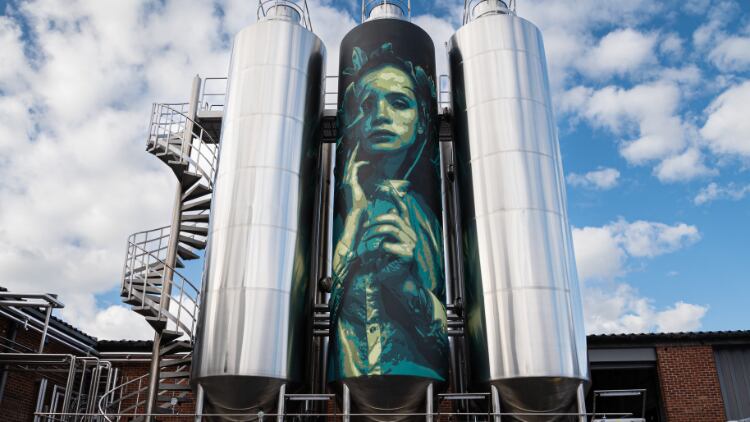
Future thoughts
Northern Monk had beers listed at Tesco just as the first lockdown came in so timing was fortunate and key to its success.
“We’ve always got a few tricks up our sleeve,” Bisset explains. “Without giving too much away, we’re still happy to have fun with beer and do some things that will get people talking but are not necessarily going to be a go-to thing.
“We’ve got quite a big project that involves four UK breweries collaborating with four of our favourite breweries from across the world to do a pack for Hop City, which will be cool.”
Dickson concludes: “One of our big focuses at the moment is getting our lager perfected. We’ve done Great Northern Lager on and off over the years but never really had the opportunity to kick on and I think this year is the year we hopefully get a core lager.”

